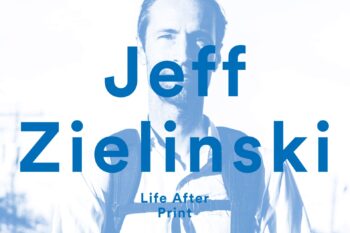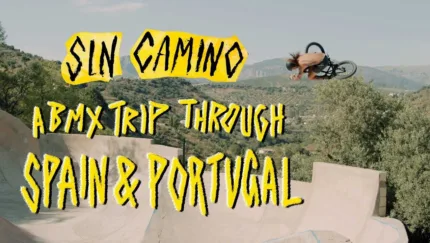
The Ultimate Backyard Build - 4Down At The Farm Bowl
On the road to some concrete Heaven In Devon
Photos, Intro and Interview by Jason 'Fooman' Colledge / 4Down
I was browsing online and stumbled across a Sidewalk Sessions skate video with the word 'Devon' in the title... being from Devon myself (in the South West corner of England), I had to find out where exactly Sidewalk had been and what this newly discovered 'Farm Bowl' actually was.
A few days later Ryan Alcock randomly hit my line and co-incidentally asked if I had heard of the Farm Bowl... and he went on to tell me that not only had he a hand in building it, but that if we wanted to head down and put some rubber on there we could. With camping, the Farm Bowl, BBQ and beers on our mind... myself, Freddie Househam, Jonny Devine, Bambi and Billy Mills managed to string a loose plan together and headed to the motherland that is Devon at the first opportunity
With endless lines and a sausage in the middle to switch things up a bit, the Farm Bowl really is a thing of beauty. I managed to catch up with it's proud owner Rob Gurney to ask a few questions that had been rattling through my head whilst we were there. Thank you for having us over, we can’t wait to get back!
Jonny Devine
Louie 'Bambi' Mire
ROB GURNEY INTERVIEW

Rob Gurney; the man with the plan.
When did the idea of building such a back yard set up come about?
Throughout my life I’ve always wanted to conceive, design and build terrain for my sporting activities. I used to build dirt jumps as a child and skate-ramps later. Then, as a snowboarder, I built and shaped back country jumps that used the contours of the landscape. I was also loosely involved in the embryonic modern skatepark industry in the UK. The difference with a backyard project is that not only can you design with a free hand, you can also, hopefully, enjoy the build process of itself. It’s inevitably a group thing and it can bring people together in a unique and wonderful way. It can also be something more than just a bowl or park, you can push ideas and experiment or go really classical (or both) maybe it can also look good and fit it’s surroundings well?
of 11
When coming up with the design was there any spot inspiration used/replicated?
The design is very simple: natural lines and the landscape, natural curves that invite you in and hopefully help you skate well. An old slurry pit of two tiers and the original idea of a cascading run from shallow and mellow to tighter curves and then connecting through and around a central mogul and opening in to a main bowl (curved wall or wave) kidney, opening back out to it’s starting point. The shapes naturally creating hips that were softened or tightened to help flow and give variety and as much complexity as we could get away with without losing those natural lines. The influences come from various parts and ideas of some of my most cherished parks and bowls: Rom, Harrow, Stockwell, Marseilles, Santa Rosa and the Combi as much as more modern influences of good parks here and there, Jeremy Donaldson designs and of course Dreamland. It’s always seemed natural to me to study and measure and analyse everything I’ve ever skated, but mostly it’s about interpreting those influences as ideas. Ideas from childhood, skating in the late 70s to modern super parks and everything that has come and gone in the intervening years. Nature's beautiful curves.

Freddie Househam
- Rob Gurney
When did this idea become a reality?
It became a reality when I found this lovely old garden farm in a remote part of Devon. The rest was serendipity; meeting a local guy with amazing excavating skills and a very nice machine, a group of close friends who found the time and relished the digging and setting out process and finally meeting and timing in with Ryan. Opus Skateparks - Ryan Alcock, Div Adam, John Coppen, Marlon Taitt, Wolf.

Jonny Devine
Louie 'Bambi' Mire
Jonny Devine
How long was the build process?
We have worked on this for a while, conceiving and designing and scoping things in to the farm and garden after moving here. The digging, form work and then getting it poured and shaped took over a year, trying to fit it in around day jobs and other work. Many holiday weeks and weekends with friends and many lonely but satisfying evenings scratching away. Probably a hardcore of a dozen or so of us then another group of many dozens helping whenever possible. The final process being the Opus crew, then a great local pump guy and his lad and of course, about 45m3 of local concrete.

Jonny Devine - one foot in the door.
Any complications with the build/trickiest part?
There were no major technical complications, other than how we could afford the materials and machinery and being open minded enough to just keep plodding on in rain and sludge or searing heat and dust even if there was no clear end in sight. A few hurdles yes, but with enthusiastic and good people bringing so many skills and experience to the project and the great concrete artistry and skill of the Opus team we got through them. If everyone is skilled and motivated then that’s one thing, but to really care about what you’re doing is where it takes on another dimension.

Bambi doing it right...
- Rob Gurney

On the road to the Farm Bowl.


What do you do for your regular job?
I’ve spent most of my working life in the interiors industry. My speciality being the use of natural materials and changing less of what already exists and keeping things simple. Often, trying to bring the outside in. In later life as a very keen gardener and landscaper I’d like to work outside more. Keeping a close connection to living and growing (food and ourselves) outdoors as much as possible and this means sport, art and activity too. Why can’t all gardens and outside living space have concrete sculptures that can be rideable and skate-able as much as for seating and/or anything? Paths that can be snake runs, banks and bowls intertwined with plants and nature. Our bowl here is really just one of the gardens, however, it’s a bowl garden which you can ride or skate or just look at while others do or, while they don’t!


Previous
Jeff Zielinski - Life After Print
"Flipping through an old magazine serves as a time capsule"
Next
Lost In Porto Photo Journal
Portugal's Untapped Spots













































